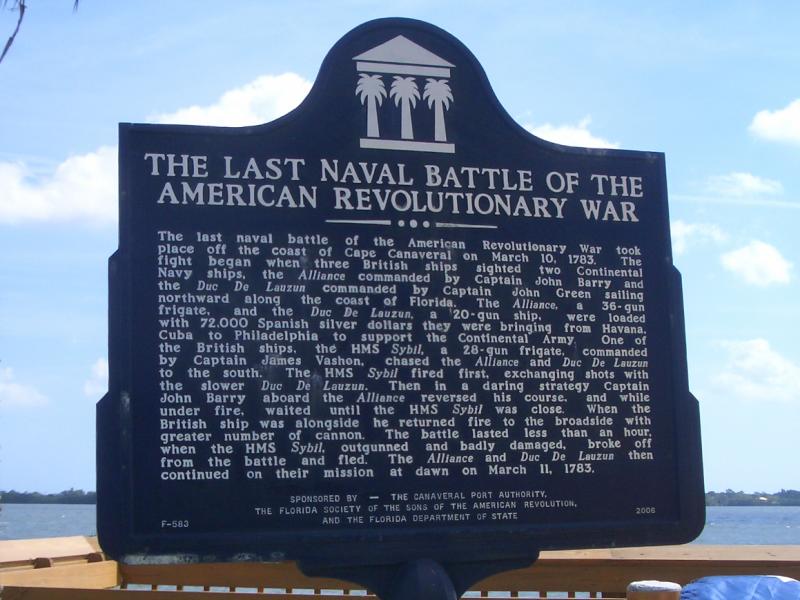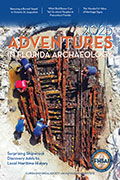People often think of history as permanent, unchangeable, and irrefutable; a static set of facts that can never change.
Contrary to popular belief, history is constantly changing.
These revisions of history become necessary when new primary source documents are discovered that contradict long held assumptions, or well-known primary sources are reevaluated with fresh eyes and new conclusions are reached. Over time, societal norms evolve and change, providing historians different lenses through which to view the past.
Sometimes, particularly with local histories, ideas about the past can become entrenched in our collective consciousness as stories are passed down from generation to generation, and repeated as fact by new generations of historians.
Last week in this column, we discussed the last naval battle of the American Revolution. All of the details of the battle presented in the article are verifiable and undisputed, except for one.
Did that battle actually take place off of Cape Canaveral?
According to a state historic marker:
“The last naval battle of the American Revolutionary War took place off the coast of Cape Canaveral on March 10, 1783. The fight began when three British ships sighted two Continental Navy ships, the Alliance commanded by Captain John Barry, and the Duc De Lauzun commanded by Captain John Green sailing northward along the coast of Florida.”
The marker goes on to explain how the American ships were carrying 72,000 Spanish silver dollars from Havana, Cuba to Philadelphia to support the Continental Army. The British ships chased the Americans south. The British ship Sybil, commanded by Captain James Vashon, attacked the Duc De Lauzun. The Alliance came to the rescue of the Duc De Lauzun, and defeated the Sybil. After the British retreated, the Americans successfully completed their mission.
Brevard County Historical Commissioner Molly Thomas has done extensive research into this battle for a series of articles appearing in the Indian River Journal. Although she was hoping to support the story of the battle occurring off of Cape Canaveral, that’s not what happened.
“In the myriad of sources consulted for this series, very few actually mention Cape Canaveral,” says Thomas. “Only two of them, in fact. Neither of them are direct primary sources, and one of them actually makes its allusion to Cape Canaveral by referencing the other source in the footnotes.”
The 1938 biographical narrative “Gallant John Barry, 1745-1803: The Story of a Naval Hero of Two Wars” was written by William B. Clark using Captain John Barry’s personal papers. In his description of the battle, Clark places the British ships “some 30 leagues southeast of Cape Canaveral.”
As Thomas points out, 30 leagues is 103.57 miles, and Captain Barry’s own account places the Alliance six or seven miles southwest of that location.
“From that moment, they promptly turned around and headed south-southwest for nearly five hours,” says Thomas. “They could have traveled nearly 50 miles during that five hour chase, which actually puts the last battle of the American Revolution somewhere between West Palm Beach and Boca Raton, Florida. Even for the most enthusiastic local historian to say that this location, (more than 140 miles to the southeast) is ‘off the coast of Cape Canaveral’ seems a bit of a stretch.”
The confusion in the popular narrative probably comes from Captain Barry, and later his biographer William B. Clark, using Cape Canaveral as a reference point in their descriptions of the battle.
“For several hundred years, Cape Canaveral was the only noteworthy landmark along the Florida coast between the Keys and St. Augustine that sailors could use to gauge their whereabouts or help them explain where they were when something happened,” says Thomas. “As William Clark had direct access to Barry’s papers, he had to have seen the name Cape Canaveral somewhere in his collection in order to incorporate it into his narrative. Unfortunately, it was likely only mentioned as a landmark.”
Historians are beginning to reassess the overlooked but important role that Florida played in the American Revolution, particularly as a Loyalist stronghold controlled by the British throughout the war.
The last naval battle of the American Revolution is still a part of Florida history, even if the conflict took place about 140 miles south of Cape Canaveral.









